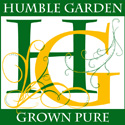I am still trying to identify the weeds that inhabit and terrorize my landscape. Their fecundity is a sight to be seen and I definitely respect it I just wish I could get tomatoes to do the same thing!
Today I am going to show some of my main weeds and identify where I am able.
Pennycress – Thlaspi arvense

Thlaspi arvense (common name Field Penny-cress) is a foetid Eurasian plant having round flat pods; naturalized throughout North America. It is also related to the Lepidium species in the cabbage family.
Scientific classification
Kingdom: Plantae
(unranked): Angiosperms
(unranked): Eudicots
(unranked): Rosids
Order: Brassicales
Family: Brassicaceae
Genus: Thlaspi
Species: T. arvense
Source
Edible uses:
Edible Parts: Leaves; Seed.Edible Uses: Condiment.
Young leaves – raw or cooked. They should always be harvested before the plant comes into flower or they will be very bitter. Even the young leaves have a somewhat bitter flavour and aroma, and are not to everyone’s taste. They can be added in small quantities to salads and other foods. They can also be cooked in soups or used as a potherb, they taste somewhat like mustard but with a hint of onion. For a leaf, it is very rich in protein. The seed is ground into a powder and used as a mustard substitute. The seed can be sprouted and added to salads.
Medicinal uses:
Antibacterial; Antidote; Antiinflammatory; Antirheumatic; Blood tonic; Diaphoretic; Diuretic; Expectorant; Febrifuge; Hepatic; Ophthalmic; Tonic.
Antirheumatic, diuretic. The seed is a tonic. Both the seed and the young shoots are said to be good for the eyes. The seeds are used in Tibetan medicine and are considered to have an acrid taste and a cooling potency. They are anti-inflammatory and febrifuge, being used in the treatment of pus in the lungs, renal inflammation, appendicitis, seminal and vaginal discharges. The entire plant is antidote, anti-inflammatory, blood tonic, depurative, diaphoretic, expectorant, febrifuge and hepatic. It is used in the treatment of carbuncles, acute appendicitis, intestinal abscess, post-partum pain, dysmenorrhoea and endometriosis. Use with caution since large doses can cause a decrease in white blood cells, nausea and dizziness. The plant has a broad antibacterial activity, effective against the growth of Staphylococci and streptococci.
Source
Plantain – Plantago major

Plantago major is a species of Plantago, family Plantaginaceae. The plant is native to most of Europe and northern and central Asia. It is widely naturalised elsewhere in the world, where it is a common weed. The standard native English name is Greater Plantain, though it is also called Common Plantain in some areas where it is introduced, particularly North America. Another one of its common names was “Soldier’s Herb” for its use on the battlefield as a field dressing.
Scientific classification
Kingdom: Plantae
(unranked): Angiosperms
(unranked): Eudicots
(unranked): Asterids
Order: Lamiales
Family: Plantaginaceae
Genus: Plantago
Species: P. major
Edible Uses:
Edible Parts: Leaves; Root; Seed.
Edible Uses: Tea.
Young leaves – raw or cooked. They are rather bitter and tedious to prepare because the fibrous strands need to be removed before use. It is best not to use the leaf-stalk since this is even more fibrous than the leaf. Many people blanch the leaves in boiling water before using them in salads in order to make them more tender. A Chinese form has more palatable leaves – it contains about 2.7% protein, 0.4% fat, 2.2% ash. Seed – raw or cooked. Very tedious to harvest. The seed can be ground into a meal and mixed with flour. It is very rich in vitamin B1. The whole seeds can be boiled and used like sago. The dried leaves make an acceptable tea. Root. No further details.
Medicinal Uses:
Plants For A Future can not take any responsibility for any adverse effects from the use of plants. Always seek advice from a professional before using a plant medicinally.
Antidote; Astringent; Demulcent; Deobstruent; Depurative; Diuretic; Expectorant; Haemostatic; Laxative; Ophthalmic; Poultice; Refrigerant; Vermifuge.
Common plantain is a safe and effective treatment for bleeding, it quickly staunches blood flow and encourages the repair of damaged tissue. The leaves are astringent, demulcent, deobstruent, depurative, diuretic, expectorant, haemostatic and refrigerant. Internally, they are used in the treatment of a wide range of complaints including diarrhoea, gastritis, peptic ulcers, irritable bowel syndrome, haemorrhage, haemorrhoids, cystitis, bronchitis, catarrh, sinusitis, asthma and hay fever. They are used externally in treating skin inflammations, malignant ulcers, cuts, stings etc. The heated leaves are used as a wet dressing for wounds, swellings etc. The root is a remedy for the bite of rattlesnakes, it is used in equal portions with Marrubium vulgare. The seeds are used in the treatment of parasitic worms. Plantain seeds contain up to 30% mucilage which swells up in the gut, acting as a bulk laxative and soothing irritated membranes. Sometimes the seed husks are used without the seeds. A distilled water made from the plant makes an excellent eye lotion.
Source
Lambsquarters – Chenopodium album

Chenopodium album is a fast-growing weedy annual plant in the genus Chenopodium that is extensively cultivated and consumed in Northern India as a food crop (referred to as बथुआ; i.e. “Bathua” or “Bathuwa” in Hindi). In Britain, where the plant is considered a weed, its standard name is Fat-hen, though this is used for other plants also; the unambiguous name is White Goosefoot, and it is also known as lamb’s quarters, nickel greens, pigweed or dungweed, or more ambiguously as just goosefoot.
Scientific classification
Kingdom: Plantae
Division: Magnoliophyta
Class: Magnoliopsida
Order: Caryophyllales
Family: Amaranthaceae
Genus: Chenopodium
Species: C. album
Source
Edible Uses:
Edible Parts: Flowers; Leaves; Seed.
Leaves – raw or cooked. A very acceptable spinach substitute, the taste is a little bland but this can be improved by adding a few stronger-flavoured leaves. One report says that, when eaten with beans, the leaves will act as a carminative to prevent wind and bloating. The leaves are best not eaten raw, see the notes above on toxicity. The leaves are generally very nutritious but very large quantities can disturb the nervous system and cause gastric pain. The leaves contain about 3.9% protein, 0.76% fat, 8.93% carbohydrate, 3% ash. A zero moisture basis analysis is also available. Edible seed – dried and ground into a meal and eaten raw or baked into a bread. The seed can also be sprouted and added to salads. The seed is very fiddly to harvest and use due to its small size. Although it is rather small, we have found the seed very easy to harvest and simple enough to utilize. The seed should be soaked in water overnight and thoroughly rinsed before being used in order to remove any saponins. The seed contains about 49% carbohydrate, 16% protein, 7% ash, 5.88% ash. Young inflorescences – cooked. A tasty broccoli substitute.
[WARNING: The leaves and seeds of all members of this genus are more or less edible. However, many of the species in this genus contain saponins, though usually in quantities too small to do any harm. Although toxic, saponins are poorly absorbed by the body and most pass straight through without any problem. They are also broken down to a large extent in the cooking process. Saponins are found in many foods, such as some beans. Saponins are much more toxic to some creatures, such as fish, and hunting tribes have traditionally put large quantities of them in streams, lakes etc in order to stupefy or kill the fish. The plants also contain some oxalic acid, which in large quantities can lock up some of the nutrients in the food, but these plants are very nutritious vegetables in reasonable quantities. Cooking the plant will reduce its content of oxalic acid. People with a tendency to rheumatism, arthritis, gout, kidney stones or hyperacidity should take especial caution if including this plant in their diet since it can aggravate their condition. There is also a report that very large quantities of the leaves have caused photosensitivity in some people. Only the raw leaves can cause problems, and then only if large quantities are consumed. A further report says that if the plant is grown in soils that contain too much nitrates then the plant can concentrate these substances in the leaves. Nitrates have been shown to cause many health problems including stomach cancers and blue-baby syndrome. In nitrogen-rich soils, the plants can also concentrate hydrogen cyanide. In small quantities, hydrogen cyanide has been shown to stimulate respiration and improve digestion, it is also claimed to be of benefit in the treatment of cancer. In excess, however, it can cause respiratory failure and even death.]
Medicinal Uses:
Anthelmintic; Antiphlogistic; Antirheumatic; Contraceptive; Laxative; Odontalgic.
Fat hen is not employed in herbal medicine, though it does have some gentle medicinal properties and is a very nutritious and healthy addition to the diet. The leaves are anthelmintic, antiphlogistic, antirheumatic, mildly laxative, odontalgic. An infusion is taken in the treatment of rheumatism. The leaves are applied as a wash or poultice to bug bites, sunstroke, rheumatic joints and swollen feet, whilst a decoction is used for carious teeth. The seeds are chewed in the treatment of urinary problems and are considered useful for relieving the discharge of semen through the urine. The juice of the stems is applied to freckles and sunburn. The juice of the root is used in the treatment of bloody dysentery. Food that comprises 25.5% of the powdered herb may suppress the oestrus cycle.
Source
Lady’s Thumb – Persicaria maculosa

The Redshank (Persicaria maculosa, formerly Polygonum persicaria) is a perennial plant from the Knotweed family Polygonaceae. It is also called Persicaria, Redleg, Lady’s-thumb, Spotted Ladysthumb, and Adam’s Plaster in Newfoundland. Native to Europe, it is an invasive species in the Great Lakes region where it was first spotted in 1843.
Scientific classification
Kingdom: Plantae
Division: Magnoliophyta
Class: Magnoliopsida
Order: Caryophyllales
Family: Polygonaceae
Genus: Persicaria
Species: P. maculosa
Source
Edible Uses:
Edible Parts: Leaves; Seed.Leaves and young shoots – raw or cooked. They contain about 1.9% fat, 5.4% pectin, 3.2% sugars, 27.6% cellulose, 1% tannin. Seed – raw or cooked. It is rather small and fiddly to utilize.
[WARNING: Although no specific mention has been made for this species, there have been reports that some members of this genus can cause photosensitivity in susceptible people. Many species also contain oxalic acid (the distinctive lemony flavour of sorrel) – whilst not toxic this substance can bind up other minerals making them unavailable to the body and leading to mineral deficiency. Having said that, a number of common foods such as sorrel and rhubarb contain oxalic acid and the leaves of most members of this genus are nutritious and beneficial to eat in moderate quantities. Cooking the leaves will reduce their content of oxalic acid. People with a tendency to rheumatism, arthritis, gout, kidney stones or hyperacidity should take especial caution if including this plant in their diet since it can aggravate their condition.]
Medicinal Uses:
Astringent; Diuretic; Lithontripic; Poultice; Rubefacient; Vermifuge.
The leaves are astringent, diuretic, rubefacient and vermifuge. An infusion has been used as a treatment for gravel and stomach pains. A decoction of the plant, mixed with flour, has been used as a poultice to help relieve pain. A decoction of the plant has been used as a foot and leg soak in the treatment of rheumatism. The crushed leaves have been rubbed on poison ivy rash.
Source
Smartweed, pinkweed – Polygonum pensylvanicum

Polygonum pensylvanicum is a species of flowering plant in the buckwheat family, Polygonaceae, that is native to eastern North America. Common names include Pinkweed, Pink Knotweed, Smartweed, and Pennsylvania Smartweed.
Scientific classification
Kingdom: Plantae
Division: Magnoliophyta
Class: Magnoliopsida
Order: Caryophyllales
Family: Polygonaceae
Genus: Polygonum
Species: P. pensylvanicum
Source
I did not find an edible use for this plant
Medicinal Uses:
An infusion of the plant tops has been used in the treatment of epilepsy. An infusion of the leaves has been used to treat haemorrhages of blood from the mouth and to aid postpartum healing. The leaves have been used as a wipe on the anus in treating bloody piles.
Source
I used the following resources for helping me identify these plants!
Rutgers: New Jersey Agricultural Experiment Station Weed Gallery
University of Minnesota Extension Weed ID site
Illinois Council on Food and Agricultural Research Weed ID site
I can not rave enough about the information you can find on all manner of plants at: Plants For A Future
They describe their site as follows:
Plants For A Future is a resource centre for rare and unusual plants, particularly those which have edible, medicinal or other uses. We practise vegan-organic permaculture with emphasis on creating an ecologically sustainable environment based largely on perennial plants.

















This is very interesting. We have most of these, plus mullein and mugwort, trying to choke out what I choose to grow. Smartweed is evil, and basically my enemy, but I understand the others can and have had have their uses here and there.
Know and even eat your weeds!…
I found your entry interesting do I’ve added a Trackback to it on my weblog :)…
[…] This post was mentioned on Twitter by Nika B, Mer. Mer said: Good stuff here: RT @nika7k: Know and even eat your weeds! http://bit.ly/cBB6jF #garden #homestead #permaculture #botany #weeds […]
Know and even eat your weeds!…
I found your entry interesting do I’ve added a Trackback to it on my weblog :)…
Know and even eat your weeds!…
I found your entry interesting do I’ve added a Trackback to it on my weblog :)…
Thank you so much for helping me identify pennycress! I just went to your website for the first time and I am glad that it was front and center. I have been wondering what that plant was as I find it in my landscape.
We had a section of our yard next to the foundation overrun with a thick growth of sheep sorrel. I spent an entire growing season harvesting those tasty lemony little leaves and including them in every salad I made that year. Alas, my new flock of chickens discovered them this year, too, and ate every last plant and turned the ground under them into a dust wallow. One of the hazards of having freerangers!